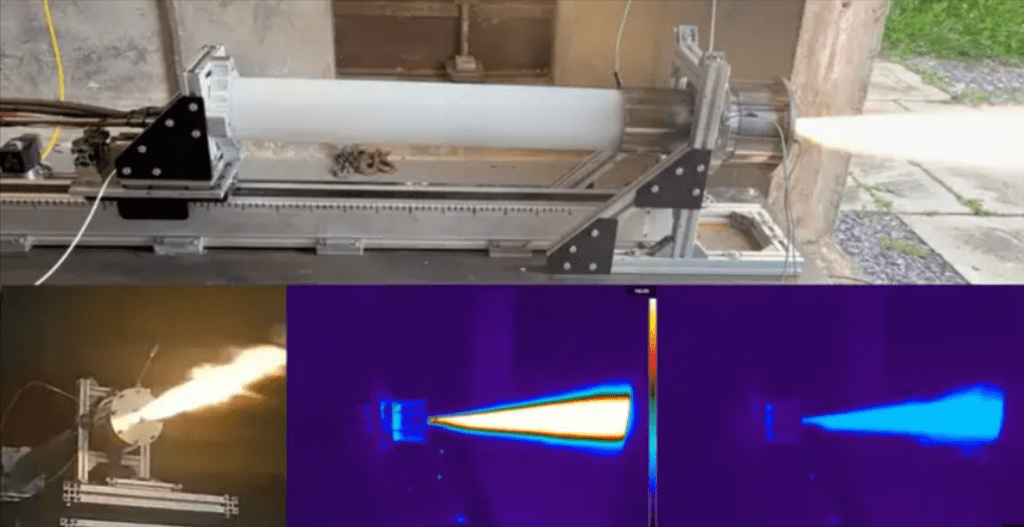Pushing Boundaries: Exploring the Fascinating World of Self-Eating Rocket Prototype Engines that Go BOOM!
Our Recent News Trends

A groundbreaking autophage rocket engine has been developed by a team of researchers from the University of Glasgow. This innovative design utilizes waste heat from combustion to melt its plastic fuselage and use it as fuel. The concept, which was patented in 1938, aims to create an infinitely staged rocket that is highly efficient in reaching orbit.
According to Patrick Harkness, the professor of exploration technology at the University of Glasgow who spearheaded the project, the idea of an autophage rocket has been around for decades. However, due to its complexity and the lack of a business case for small payloads, it has not been widely explored until now.
The engine operates by burning high-density polyethylene plastic tubing along with liquid propane and gaseous oxygen, which serve as the main propellants. As the rocket ascends to orbit, it gradually consumes the plastic tubing, which is fed into the combustion chamber. This unique feature allows the rocket to carry larger payloads compared to other vehicles of similar mass, as it requires less propellant from Earth.
Named Ouroborous-3 after the ancient Egyptian symbol of a serpent eating its own tail, the rocket represents the concept of self-destruction and rebirth. The researchers successfully test-fired the prototype rocket engine at the MachLab facility, located at Machrihanish Airbase. These controlled experiments demonstrated a thrust of 100 newtons.
This groundbreaking development in rocket technology opens up new possibilities for more efficient space exploration and payload delivery. The autophage rocket engine showcases the potential of utilizing waste materials as a source of fuel, paving the way for future advancements in the field.
In 2018, the initial test was conducted. Through the latest test, the researchers have successfully demonstrated the feasibility of utilizing more powerful liquid propellants for the engine. Additionally, they have proven that the plastic fuselage can endure the necessary forces to propel it into the engine.
Furthermore, the tests have revealed the rocket’s ability to control, regulate, restart, and pulse its burn in an alternating pattern. Moving forward, the researchers are focused on developing a prototype of a lightweight engine for flight and incorporating liquid oxidizers.
“Our objective is to increase the scale by approximately two orders of magnitude, while remaining within the boundaries of our specialization in nanolaunchers,” stated Harkness. This rocket has the potential to directly transport minuscule nanosatellites into orbit, eliminating the need for expensive missions on conventionally fueled rockets.
Another significant advantage of this rocket is its self-consumption before reaching orbit, preventing it from becoming additional space debris. This addresses the growing concern of space clutter and its potential hazards.


